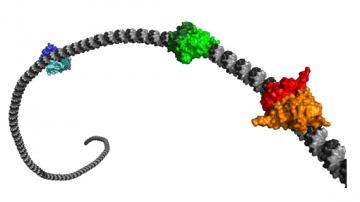The anatomy of a living organism, whether plant or animal, is inscribed in its
genetic make-up: these are the architect genes that govern the nature and
position of its organs. The evolution of living beings over time is often
dictated by the evolution of such genes. Their mutations can thus
contribute to evolving morphologies, even creating new organisms. But they can
also be fatal, if the changes that they induce are too dramatic. For this
reason, the evolution of an architect gene most often occurs after a duplication
event, in which one of the two copies ensures the original function, allowing
the other to evolve freely.
The researchers have recently shown that the architect gene LEAFY (which
encodes the protein of the same name) managed to evolve without duplication. In
flowering plants, this gene orchestrates the formation of flower buds and their
various organs (sepals, petals, stamens and pistils). It was already present in
plants, albeit with different properties, several hundred million years before
the appearance of flowers. We see this in the presence of the LEAFY protein in
algae and mosses, which do not flower. The acquisition of the properties
required for its floral function occurred smoothly, via an intermediate
form, which accumulated old and new features (those of algae and flowering
plants).
This intermediate form has been identified because it still exists in Nothoceros
aenigmatica, a species related to mosses. This is the first time that such an
evolutionary mechanism is updated for an architect gene. This mode of evolution
is probably involved in other types of architect genes, such as those
responsible for the development of embryos in insects or mammals.

Illustration,
over time and on a DNA strand, of three conformations of the LEAFY
protein in different organisms: algae in blue; moss in green; and flower
in red-orange.